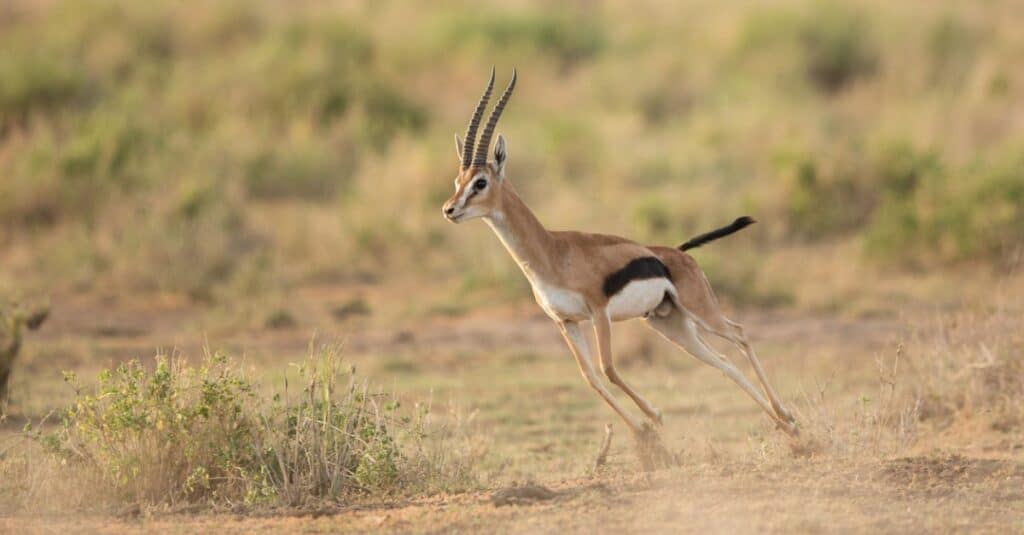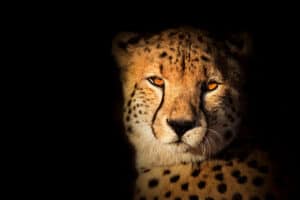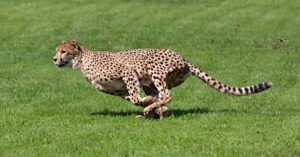Gazelle Triumphs Over an Ambitious Cheetah
In the footage displayed below a scene from the heart of the African savanna unfolds, a thrilling battle between a powerful gazelle and a lightning-fast cheetah. The gazelle, equipped with immense strength and agility, finds itself relentlessly pursued by the cheetah in a desperate bid for survival. With each burst of speed, the gazelle darts away, while the cheetah lunges forward, aiming to bring its prey down to the ground and finish it off with a deadly bite to the neck.
This Gazelle Doesn’t Even Think About Giving Up!
As the chase intensifies, the cheetah’s cubs eagerly join in, assisting their mother in the pursuit of the mighty gazelle. The odds seem stacked against the gazelle as it struggles to outmaneuver its relentless predators. However, the gazelle possesses a weapon to defend itself—a pair of formidable three-foot-long horns. In a moment of sheer resilience, the gazelle turns to face the attacking cheetah. It readjusts its head and unleashes a series of powerful head-butts, with a horn finding its mark and puncturing the cheetah’s abdomen, inflicting severe injuries on the big cat. The unexpected counterattack leaves the cheetah reeling in agony and shock.

Cheetahs’ light and small frame makes them the fastest land animal on the planet, but once they catch their prey that same lack of bulk and strength can prove to be their downfall!
©Marcel Brekelmans/Shutterstock.com
Seizing the opportunity, the gazelle breaks free from the chase and makes a daring escape, leaving the wounded cheetah behind. Meanwhile, the cubs, now without a healthy mother to defend them, are forced to fend for themselves in the unforgiving wilderness. In this gripping battle of survival, the gazelle emerges as the unlikely victor, dealing a devastating blow to the cheetah’s dominance and ultimately fatally wounding the feline. Nature’s intricate web of predator and prey weaves yet another extraordinary tale on the African plains.
A Lucky Strike to Save a Life!

Gazelles possess a weapon to defend themselves—a pair of formidable three-foot-long horns.
©iStock.com/StuPorts
In the African savannah, prey animals such as water buffalo and the gazelle that we can see in the video below possess powerful defense mechanisms in the form of sharp horns. Other animals such as Zebras and Giraffes utilize strong kicking hooves to ward off their predators. While encounters between predators and prey are frequent, instances, where prey animals successfully wound their attackers with their horns or hooves, are relatively rare.
These defense mechanisms are typically employed as a last resort, and most prey animals rely on their speed, agility, and camouflage to escape predators. However, in intense confrontations or when cornered like in the clip below, prey animals may unleash their formidable weapons, inflicting injuries on their attackers and occasionally turning the tables on their predators.
Prey are never safe but the danger of being a hunter is on full display as any meal might take your life!
The Fate of These Two Cubs is Very Uncertain!

Cheetahs often give birth to litters of 4 or 5 cubs, with coalitions between the siblings in adulthood being relatively rare!
©Stu Porter/Shutterstock.com
When orphaned due to their mother’s mortal injury, the fate of the two cheetah cubs in the video below is left hanging in the balance! Without their mother’s guidance and protection, their chances of survival are significantly diminished. Cheetah cubs heavily rely on their mother to learn hunting techniques and essential survival skills. While they may attempt to hunt on their own, their inexperience poses a considerable challenge.
If they manage to overcome these hurdles and reach adulthood, it is unlikely for them to stay together. Cheetahs are generally solitary animals, and adult siblings tend to disperse, seeking their own territories to avoid competition. However, there have been rare cases of sibling coalitions forming, where brothers or sisters remain together for a certain period, increasing their chances of survival and successful hunting.
Thank you for reading! Have some feedback for us? Contact the AZ Animals editorial team.








